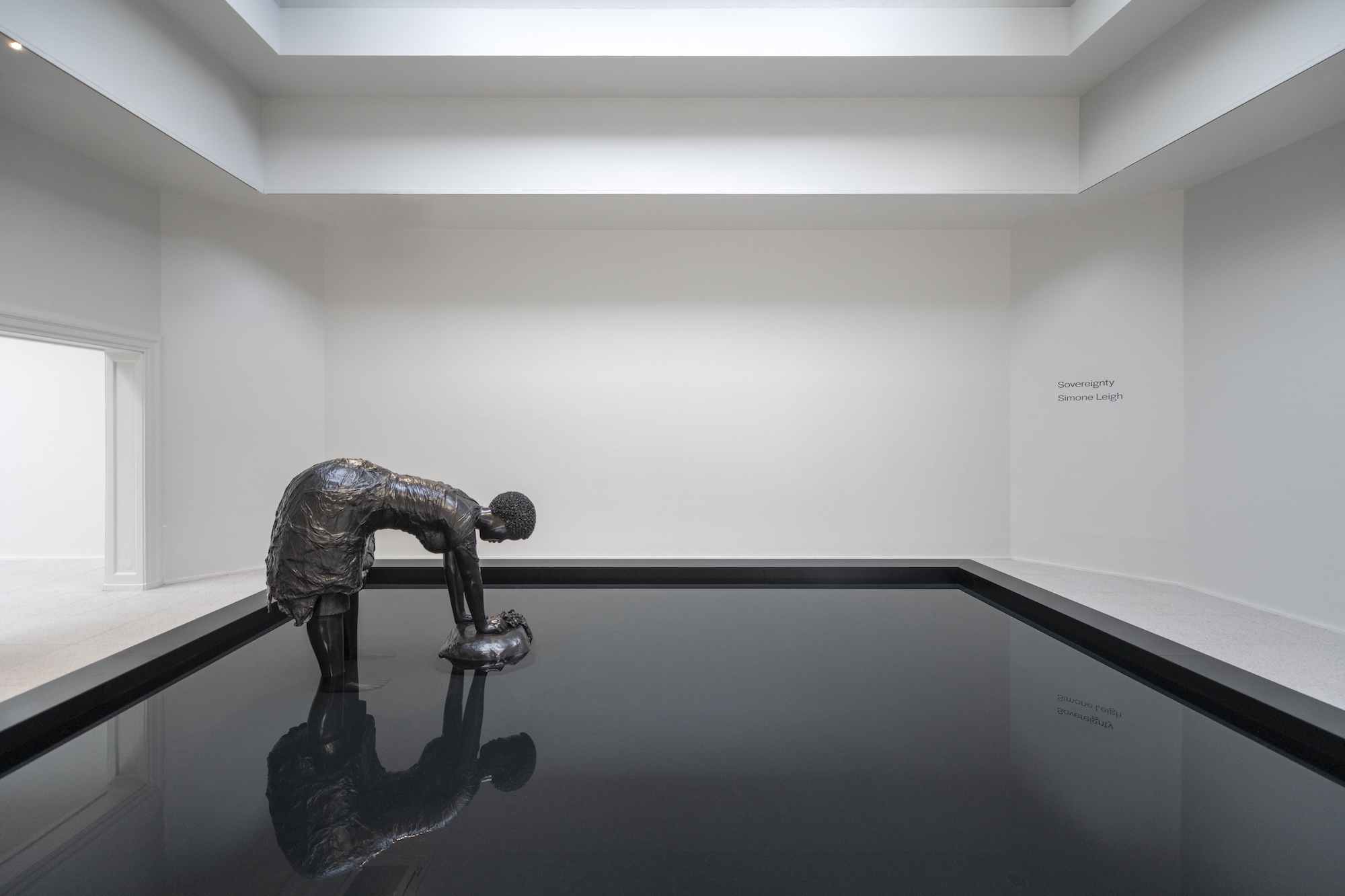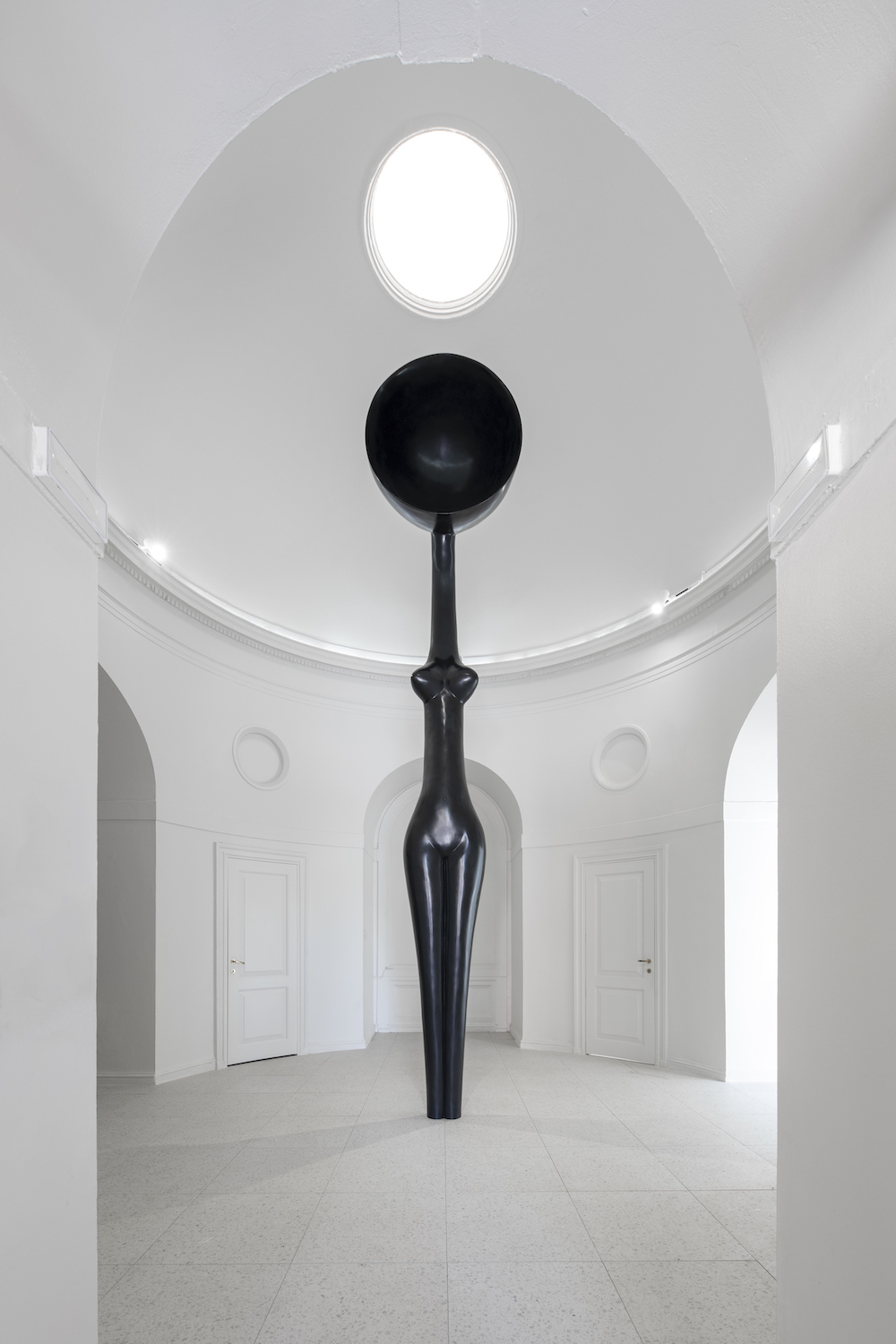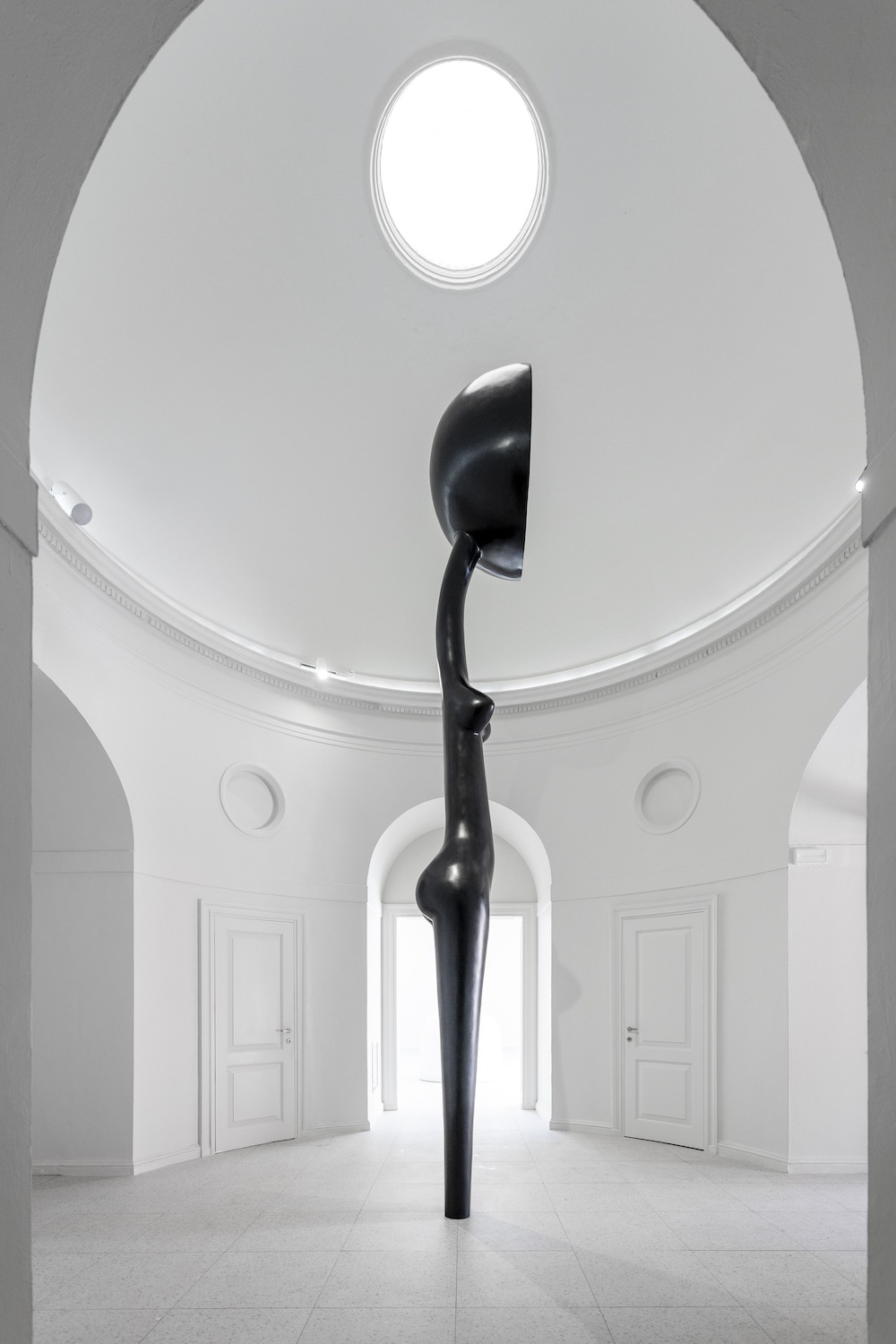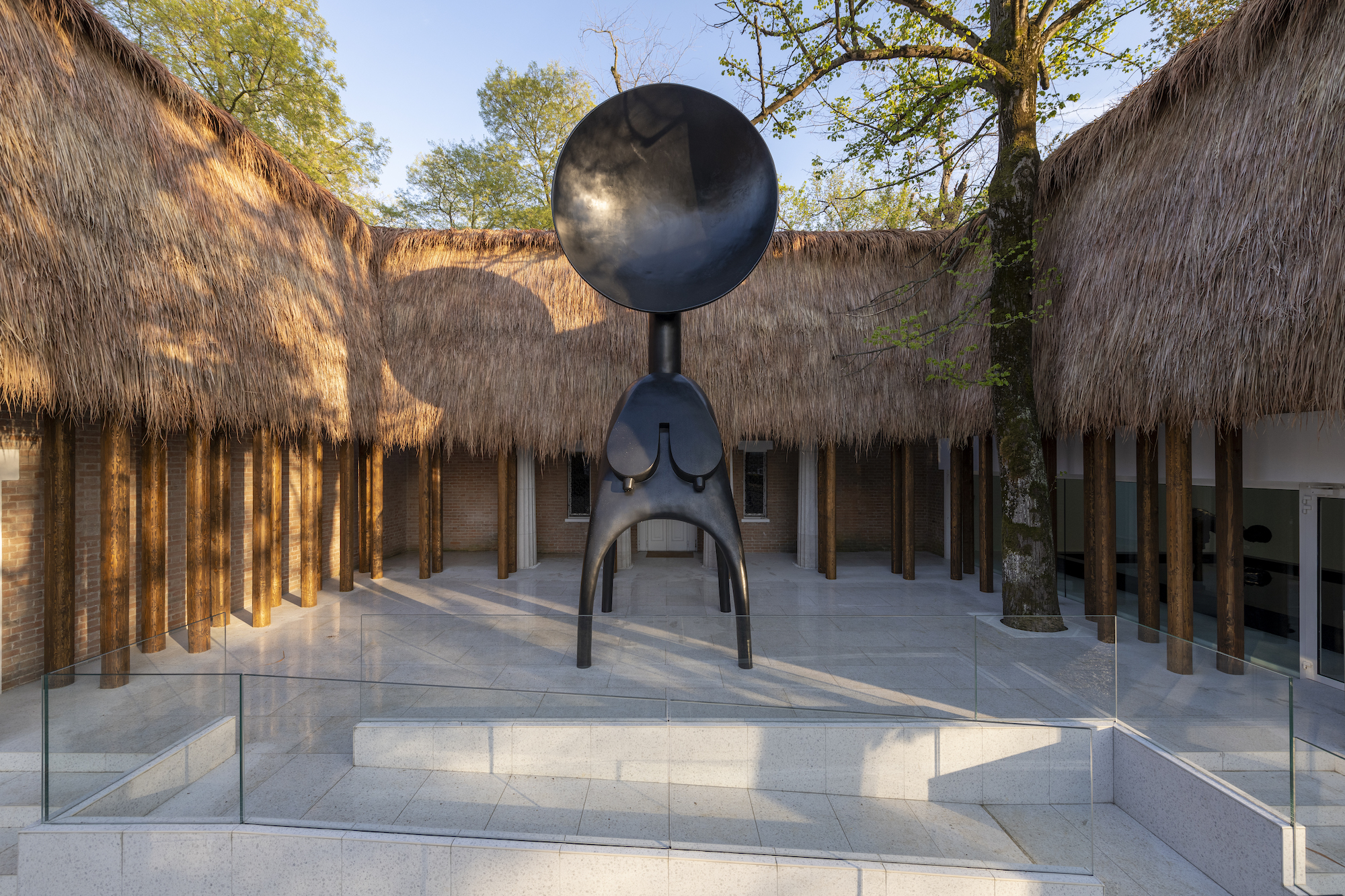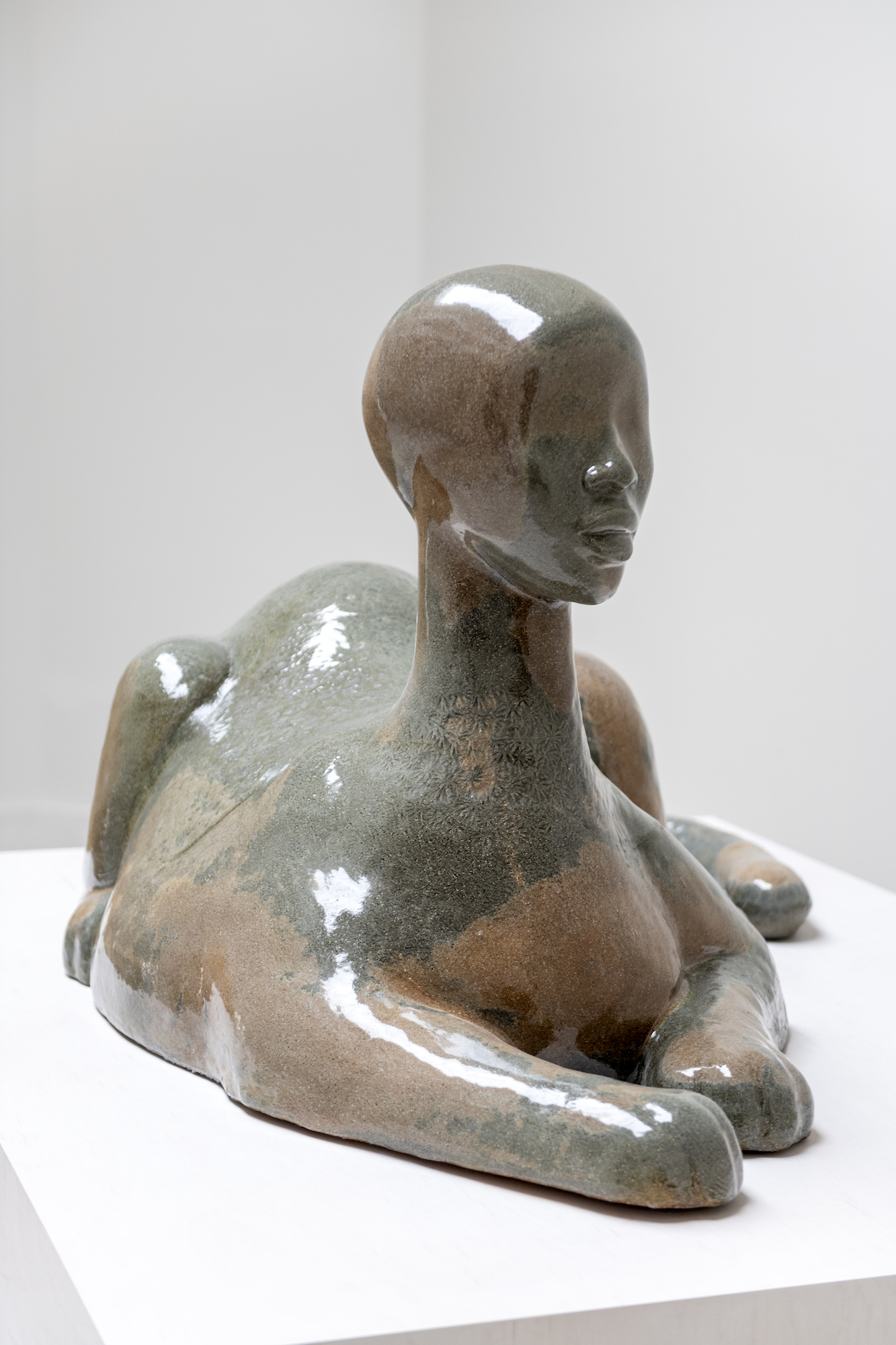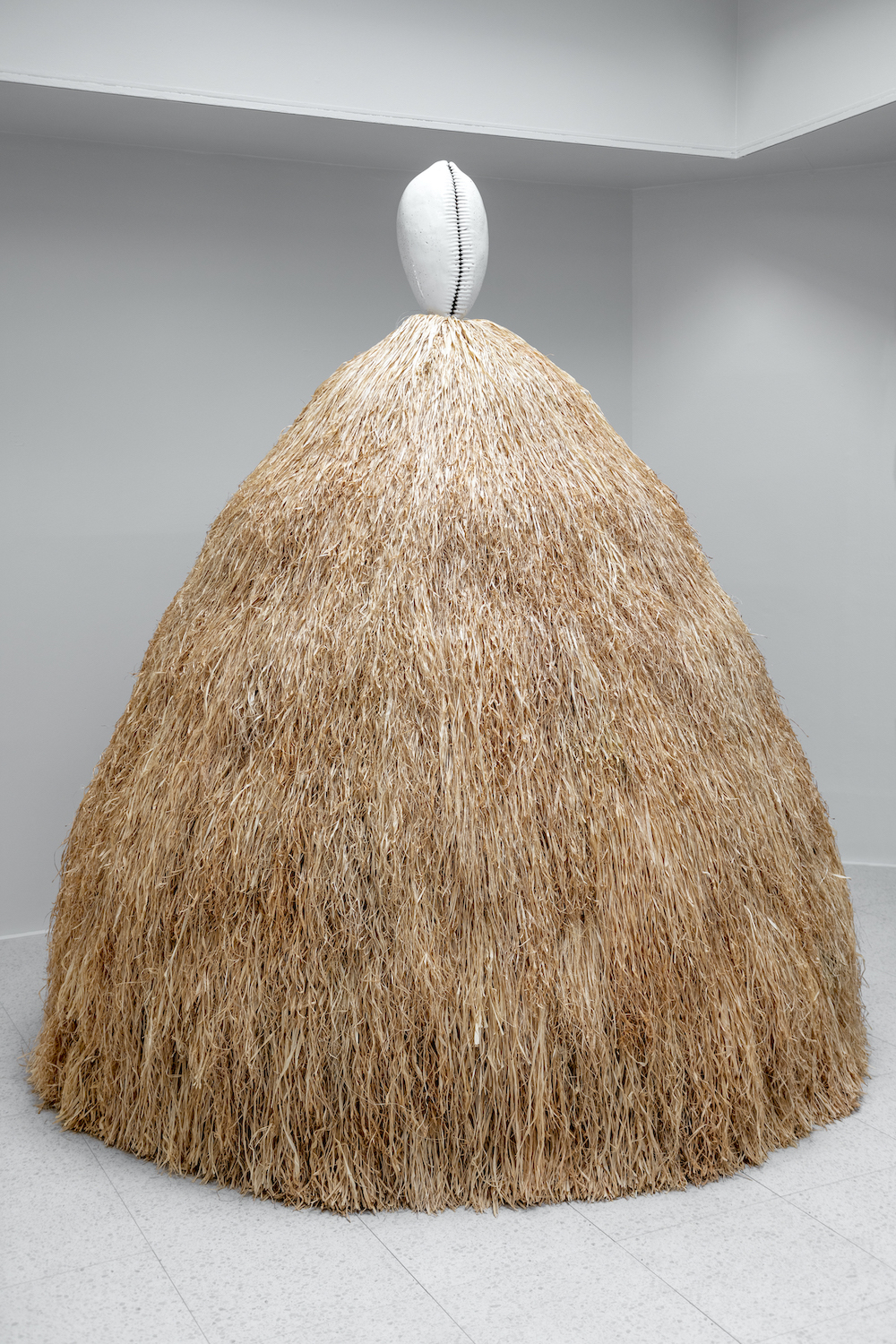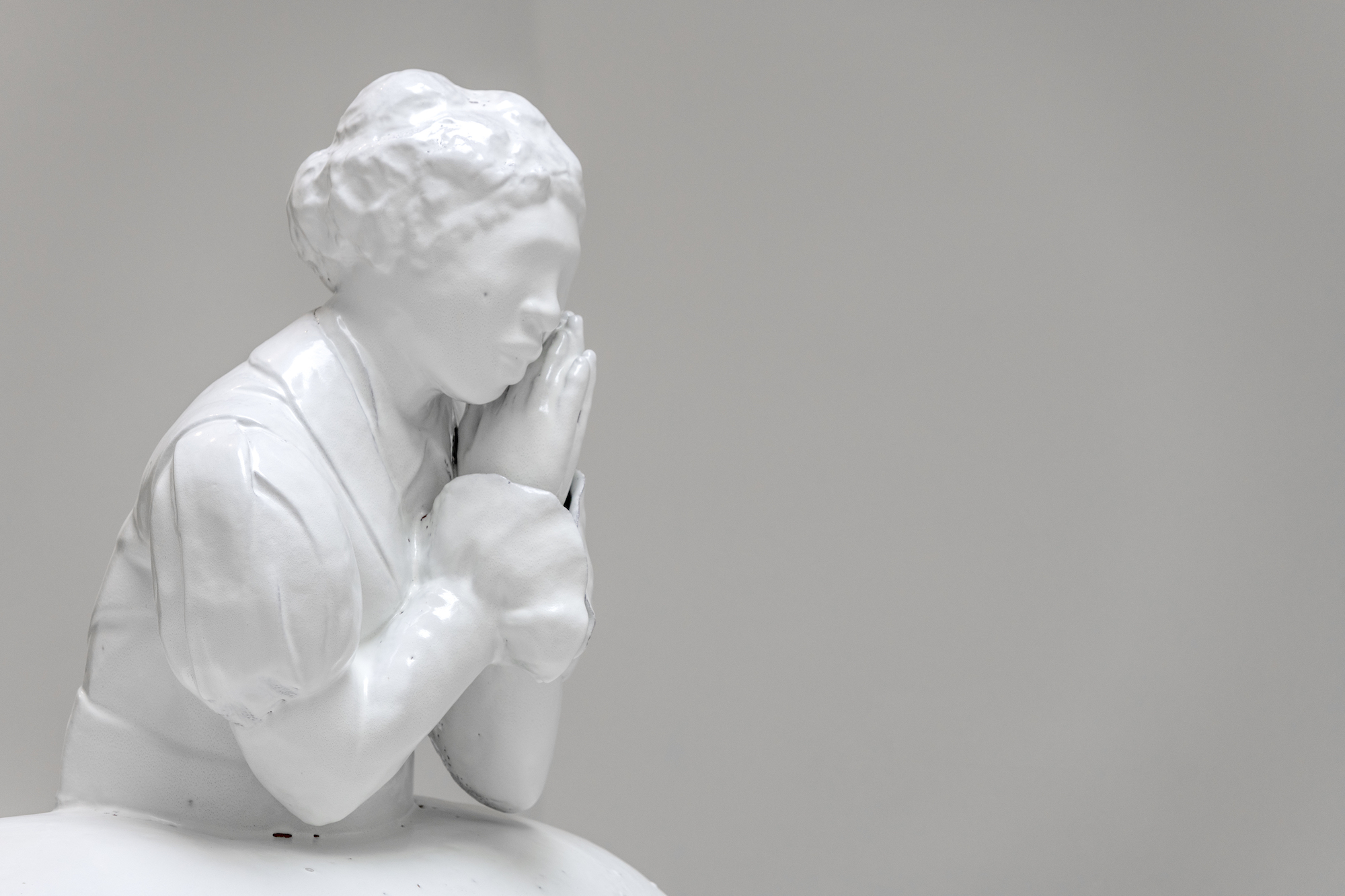Simone Leigh: Sovereignty

Simone Leigh, Façade, 2022 thatch, steel,and wood, dimensions variable, bronze, 288 × 120 × 91 inches [photo: by Timothy Schenck; courtesy the artist and Matthew Marks Gallery]
Share:
Women have to summon up the courage to fulfill dormant dreams.
—Alice Walker
My grandmother never made it to Europe. She took French in school, but without much use for it, the language collapsed on itself, having found no way to lay down its roots. I remember the nondescript Parisian souvenirs in her house—relics that friends carried back for her. Carolyn had dreams that got swallowed by the life she inherited. She took care of her four children and maintained the mask of a happy marriage, far beyond the visions she had for herself. Grandma transitioned in her mid-80s; my mother before she was 40; my aunt right after her 50th birthday. These Black women were generators of strength, love, care, and of a country that drained their bodies but not their spirits. Their legacy is leaving a debt of dreams deferred. A task that I have chosen to take on—a curse I am actively working to break. Listen to your inner hum. It began when two concepts collided: The Milk of Dreams as the theme of the 2022 Venice Biennale and Simone Leigh’s selection to activate the US Pavilion. I heard and answered the call to go.
Simone Leigh, Last Garment, 2022, bronze, 54× 58 × 27 inches [photo: by Timothy Schenck; courtesy the artist and Matthew Marks Gallery]
OPENING THE PORTAL
The Milk of Dreams comes from a book by British-Mexican surrealist Leonora Carrington. According to the curator of the biennale, Cecilia Alemani, Carrington “describes a magical world where life is constantly re-envisioned through the prism of the imagination. It is a world where everyone can change, be transformed, become something or someone else.”
Regardless of whether we want to lean into the surrealist vision of dreams, the dreamscape is the one place where Blackness isn’t tethered to productivity. It is a place where our energy can exist outside the oppressions we face in waking life. Each time we begin dreaming, we can rejoin the polychronic rhythm where the past/present/future becomes synonymous with the now. This shift in awareness can translate into new ways of engaging the world when we wake up. But some dreams still hold the reverberations of generational trauma—especially the continued fever dream called white supremacy.
Part of the re-envisioning takes place in the shattering of the old foundations to understand what nightmares our reality was built upon to let us cleanse that past. By peeling away the layers of history and removing corrosion, we are free to imagine new possibilities. Here, scholar and frequent collaborator Saidiya Hartman uses the process of critical fabulation to reclaim lost elements of an archive. Much like Hartman, through imagination, Leigh casts the term into the physical and births a new vision. In her new body of work for the US Pavilion, Sovereignty, each work interrogates the archive by resurrecting and rewriting actively forgotten histories of African diasporic material (architecture, objects, technology) and immaterial (ancestral rituals, Black feminism, spirituality) worlds. Through sculptures and one accompanying video, Leigh ignites the term sovereignty by creating visual meditations upon Black material culture and self-authorship for Black womxn’s bodies and actions. Without knowing it, I already understood the assignment. The task was self-examination, and the gift was to be rendered more whole after connecting with the works.
Simone Leigh, Sentinel, 2022, bronze, 194 ×39 × 23.25 inches [photo: by Timothy Schenck; courtesy the artist and Matthew Marks Gallery]
Simone Leigh, Sentinel, 2022, bronze, 194 ×39 × 23.25 inches [photo: by Timothy Schenck; courtesy the artist and Matthew Marks Gallery]
NEW AWAKENINGS
I traveled 6,160 miles to watch Simone Leigh make art history as the first Black woman to represent the United States in the biennale. Alone. I didn’t feel the need to pull anyone into the constellation known as international travel and the balancing act of witnessing Black art as a Black woman in traditionally White spaces. I wanted to go without providing answers, seeking outward approval, or guilt. Are you traveling to Europe by yourself? Are there any Black people there? Yes and No. I had this overwhelming sense that I would be seeing this work for every Black woman in my family, whom I carry within me. Our Blacknesses—the plurality of Black existence—came through each of us who walked through Leigh’s pavilion (because it no longer belonged to the US). Through us, they arrived. We were greeted by Façade (2022) and the building’s guardian, Satellite (2022).
Simone Leigh, Satellite, 2022, bronze, 288 x 120 x 91 inches [photo: by Timothy Schenk; courtesy of the artist and Matthew Marks Gallery]
Façade is a multipronged intervention that fuses layers of past, present, and potential (hybrid) timelines by altering the building’s exterior. Using thatch, steel, and wood, Leigh intervenes on the roof’s architecture to embody the essence of a 1930s chefferie, or West African palace. This re-creation also echoes the mobilizing of that aesthetic during the 1931 Paris Colonial Exposition, in which colonial powers flaunted replicas of architecture from their territories. At times, people from those lands were displayed as part of those performances of power. But here, you must zoom out even further, to the structure that lies beneath, a Palladian one, inspired by Venetian architect Andrea Palladio (1508–1580). He was the same architect who laid the foundation for the US heritage colonial style, including the most menacing of them all—plantations. When the US Pavilion was completed in 1930, Black Americans were compressed under two invisible structures: the Great Depression and the increasing oppression of Jim Crow.
Facing the building straight on, I felt tension between the veils of each narrative. It created a need to recalibrate how I would enter the space. As with every work, Leigh simultaneously conjures the superimposed pasts and transmutes them into a new structure. Façade is no different. The work is a gateway, one that bridges extracted projections of African aesthetic realities by refocusing upon the origins of Black exterior expression. Those spaces—just like bodies—hold stories, memories, and dreams. The transformation of this pavilion foreshadowed how this experience would find me in a house of discourses. But this time, there could be a more nuanced conversation about the interiority of Black female consciousness.
Simone Leigh, Sphinx, 2022, glazed stoneware, 29.75 × 56.75 × 35 inches [photo: by Timothy Schenck; courtesy the artist and Matthew Marks Gallery]
Simone Leigh, Cupboard, 2022, raffia, steel,and glazed stoneware, 135.5 × 124 × 124 inches [photo: by Timothy Schenck; courtesy the artist and Matthew Marks Gallery]
RETURNING TO THE SOURCE
Resting within the courtyard of the pavilion, Satellite (2022), a faceless 24-foot-tall, anthropomorphic Black sculpture, confronts you. The monumental piece transmits a message: This work is for Black women. I wanted to run to it and embrace one of its four legs—as a child would enfold their mother/auntie/sister—to tell it of my journey, to hear all that I had missed. Instead, I was frozen and met it with longing eyes. I was one of few Black folx on the island that day. Google Maps doesn’t work well here—a piece of advice that resurfaced when I had to navigate the narrow streets, stares, and my feelings. How many of us will see the work? There are so many costs, hidden and explicit, associated with viewing this art. The price of the plane ticket, accommodations, transit, and food are outweighed by historical exclusion from these spaces. If you’re lucky, you avoid the spiritual unease of being uprooted, of floating about a land you have no ties to.
On first contact, I experienced déjà vu. The work felt familiar, but it gestured to another truth. My grandma had a D’mba in her living room—a headdress mask from the Guinea Coast. To the Baga people of Guinea, D’mba represents mature fertility—the community’s prosperity that comes from the nursing and nurturing of the mother. That meaning can be seen in the flatness of breasts and felt in the labor of Black womxn, including my grandma. Satellite is a meditation on transmission and transformation. The ritual object (D’mba), used for ancestral communication, gets re-envisioned. Specifically, the head of the mask becomes a satellite dish that mirrors and expands the aim to relay messages into realms beyond our current one. The essence of Leigh’s work is that these sculptures serve as multidimensional archives, a visual syllabus. What messages are being broadcast?
Satellite’s wide stance allows you to walk beneath it, its four legs doubling as columns. The gap becomes a portal. We enter a space where ancestral conversations span time and place, and echo the colliding layers of history activated by Façade. These layers provide the foundation to create a new discourse about Black ritual objects and spirituality. Since the “Year of Return” to Ghana in 2019, Black spirituality has entered the collective dialogue about healing intergenerational trauma and tapping into one’s ancestral traditions. But for many Black people, heartbreak lies within the inability to trace one’s lineage, which makes it impossible to identify one’s indigenous practices. How might diasporic Black folx reclaim their rituals without replicating the violence of extraction that comes from consuming such practices in the absence of cultural literacy? Through this artwork, and others in the pavilion, Leigh might offer us an answer. What if we viewed her sculpture as a blueprint for bridging spiritual practices across the diaspora—as an introduction to a new visual language that dissolves barriers but honors the history, customs, and ability to dream alternate realities of connection?
Once I returned from Venice, I felt my inner landscape expand. I had seen a body of work that affirmed my creative and spiritual practice. It gave words and texture to the subtle impressions I had been picking up during my travels to view Black womxn art. It was a rebirth, an awakening to the importance of the quiet resilience of Blackness. Collective collapse is not an option when you must fulfill an unspoken pact. When I arrived back at my apartment, I called my dad, who has always been my safe haven for spiritual communion and dream interpretation. His voice was softer than usual: “E’s mother transitioned this morning.” Overwhelm flooded me first. Then relief. So much of Black American reality circulates around grief. Mourning gets confused with morning, and with the repetition of suffering that our legacies get boxed inside. I chose to tap into the offerings of Sovereignty, to dive into the imaginary and author this moment of loss, outside of pain. Satellite came to mind as I sent thoughts to my cousin. I saw its head tilting up, directing a line to the hopes and desires of Black womxn whose lives were cut midsentence.
Simone Leigh, Anonymous, installation detail, 2022, glazed stoneware, 72.5 × 53.5 × 43.25 inches [photo: by Timothy Schenck; courtesy the artist and Matthew Marks Gallery]
Mia Imani Harrison is an international interdisciplinary artivist (art + activist) and arts writer. Harrison explores how disenfranchised communities can heal individual, communal, and societal trauma by creating works that live in between art and science. This “third-way” mixes unconventional methods (dreams, rituals) and science (ethnography, geography, psychoanalysis) to dream new potential ways of being. This path is followed through experimental interviews, reportage, continued conversations, and the like. She strives to create generative pieces that allow the artist’s works to have a second breath outside an exhibition’s confinements.
